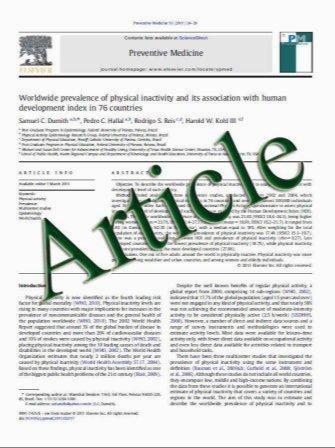Differences in femoral neck geometry associated with age and ethnicity
- نوع فایل : کتاب
- زبان : انگلیسی
- مؤلف : K. M. Kim & J. K. Brown & K. J. Kim & H. S. Choi & H. N. Kim & Y. Rhee & S.-K. Lim
- چاپ و سال / کشور: 2010
Description
Summary We studied femoral geometry in relation to age and ethnicity in a cross-sectional study. Age-associated cortical thinning showed the most pronounced effect, and Koreans studied here had thicker cortices and lower buckling ratios than those reported for other races. Cortical thickness may thus be a major determinant of hip fracture risk. Introduction The rate of hip fracture varies by age and ethnicity. The geometric properties of the femur influence femoral strength and fragility, but differences in femoral geometry according to age and ethnicity are poorly understood. To explain the high prevalence of hip fractures in the elderly and the relatively low hip fracture rate in Asian populations, we studied age-related changes and ethnic differences in femoral geometry. Methods We recruited 214 peri- or postmenopausal women aged 46 to 85 years (mean age, 60.6 years). Their proximal femoral bone mineral densities (BMD) were measured by quantitative computed tomography and further analyzed geometric properties. Results We observed large declines in trabecular volumetric bone mineral density associated with aging (33.03% less than the reference value in the oldest group, respectively). Cortical thickness decreased remarkably with age as well, and only 53.94% of the baseline value remained in the oldest group. As a result, the cortical buckling ratio increased geometrically and reached 239.14% of the reference value in the oldest group. In comparisons with other ethnic groups, Korean subjects had thicker cortices than their American, European, and African counterparts. Conclusions In this cross-sectional study, cortical thickness showed a pronounced age-associated decrease, and the cortical buckling ratio showed a strong age-associated increase. This may in part explain the higher rates of hip fractures in the elderly. When compared with other races, Asians had thicker cortical bone and lower buckling ratios, which may partially explain the lower prevalence of hip fractures in Asians.
Osteoporos Int (2011) 22:2165–2174 DOI 10.1007/s00198-010-1459-z Received: 6 April 2010 / Accepted: 31 August 2010 / Published online: 26 October 2010


